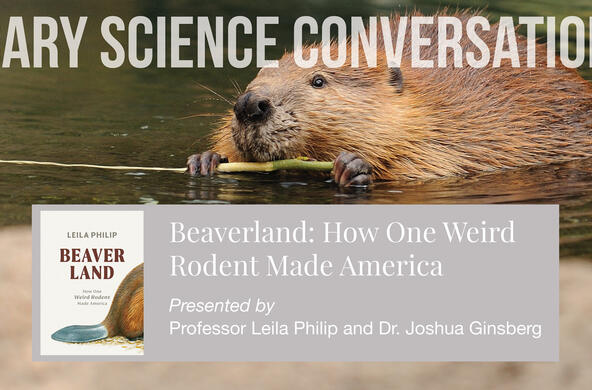Often reviled as rat-tailed, beady-eyed, trash-eating pests, opossums could be viewed as the Rodney Dangerfields of the animal kingdom: They just don't get respect. Leann Kanda of New York's Ithaca College has studied and admires the species, but she concedes that cute, fuzzy baby opossums grow up to become "pretty ugly little beasts."
Why such a bad rap? "I think it's their tail," says William Krause, professor of anatomy at the University of Missouri–Columbia and an ardent fan of opossums. One look at that long, naked appendage and people instantly think "rat," an association not to the opossum's advantage. Yet the tail itself is much to the opossum's advantage, serving as a veritable fifth limb.
Like monkeys, opossums can wrap their tails around branches to help them climb trees. They can even carry grass and other vegetation—material they use to line their dens—in their coiled tails. And that's just one of many intriguing twists about opossums, North America's only marsupials.
Misunderstood Marvels
These gray-to-black, house-cat-sized creatures have inspired many a misperception. Male opossums have bifurcated (or forked) penises, a bit of anatomical weirdness that convinced colonial Americans that the males bred with females through the female's nostrils, and that the female then sneezed her young into the pouch. Not true (thankfully). But as marsupials, female opossums do have two sets of reproductive organs, making them unique among North American mammals.
Newborn opossums in their mother's pouchAs with kangaroos, female opossums rear their young in fur-lined pouches. Baby opossums, like baby kangaroos, are called joeys; adult male and female opossums are jacks and jills. With the briefest gestation period of any mammal—about 12 days—the blind and hairless newborns crawl through their mother's fur into the pouch, where they nurse for roughly 100 days. Usually no more than seven or eight young make up a litter.
Even more notable than their reproductive traits, opossums have been found to be immune to the sting of honeybees and scorpions, to toxins such as botulism and even to the venom of rattlesnakes and other poisonous serpents. (Opossums eat rattlesnakes, which may explain why they developed the ability to survive snakebites.) Researchers are studying the toxin-neutralizing factor in opossum blood in hopes that it can be adapted as an antivenom in humans—reason enough, says Krause, to "consider the opossum in a new light."
As for the opossum diet, "anything" best describes the menu. Birds, eggs, mice, rats, insects, snails, nuts, garbage—it's all fair game. In gardens, opossums may devour your vine-ripe tomatoes, but they may also snarf up plant-eating insects, slugs and other pests. And because opossums eat berries and other fruit, they can play a useful role as seed dispersers.
Supreme generalists, opossums also eat carrion. Snacking on dead animals that have been hit by cars, opossums often end up being flattened themselves, perhaps one reason they are among the shortest-lived mammals of their size, seldom surviving more than a year. Besides automobiles, opossum killers include predators such as large owls, coyotes and bobcats. Rarely aggressive themselves, opossums famously face threats by keeling over and playing dead—a behavior dubbed "playing possum." To complete the act, the opossum also defecates and exudes a noxious oily green slime from its anal glands. This feigned death can continue for hours.
Smarter Than They Look
Passivity in the face of danger may be one reason opossums are often considered unintelligent. But in his book The Opossum: Its Amazing Story, Krause writes, "In spite of their apparent primitiveness and small brain size, opossums have a remarkable capacity to find food and remember where it was found," besting "rats, rabbits, dogs and cats" at that task. Opossums also do better than rats and cats at solving maze problems.
They've had plenty of time to work on it. Fossil records trace the ancestral origins of the opossum back to the period just after the extinction of the dinosaurs some 65 million years ago. Though early North American marsupials went extinct some 20 million years ago, the emergence of the Isthmus of Panama rejoining North and South America provided a bridge for the modern opossum to travel north and establish itself in what is now the southeastern United States. Opossums have continued their northward march all the way into southern Canada.
Ithaca College's Leann Kanda studied opossums in western Massachusetts to learn how they survive New England winters. As animals that originated in the Tropics, opossums can't bulk up with subcutaneous fat as well as raccoons and other North American mammals, so they are in danger of freezing when temperatures dip below 19 degrees Fahrenheit. "That means that if it's pretty cold out on a winter night, the opossum doesn't really have a lot of choice," says Kanda. "It can't go out and forage outside for very long. So it has to just sit in its den and burn energy." Too many such nights and the animal dies.
Tracking radio-collared opossums, Kanda found that the ones that endured New England winters were living near humans and not in the forest. Urban areas tend to have warmer nights than rural ones. They also offer more abundant food as well as warm "thermal refuges"—sheds, basements and attics—"which are probably more comfortable places to den than a hole in the ground," Kanda says. In addition, female opossums need a minimum weight of 5.5 pounds before winter's onset to survive the cold months, and the only ones in her study that did, says Kanda, "were animals that used urban resources."
An Unexpected Plus
Serving as inadvertent innkeepers for opossums may turn out to be good for your health. Scientists at the Cary Institute of Ecosystem Studies in Millbrook, New York, have learned that opossums act like little vacuum cleaners when it comes to ticks, including those that can spread debilitating Lyme disease to humans and other animals.
In lab experiments, scientist Richard Ostfeld and his colleagues studied six species of wildlife—three kinds of rodents, two types of ground-nesting birds and opossums—applying precisely 100 ticks to each animal's neck, then studying tick feeding, survival and Lyme transmission. According to Ostfeld, opossums prove to be "a very poor reservoir" for Lyme and several other diseases, meaning that ticks feeding on the animals were unlikely to get infected or, by extension, go on to infect other hosts after dropping off the initial host.
Beyond this, the researchers found that, on average, about 50 percent of the 100 ticks on white-footed mice in the experiment fed to repletion then dropped off alive, but only 3.5 percent of ticks on opossums survived to drop off. Why? It turns out that the fastidious opossums were killing their ticks in the process of grooming—scratching, licking and chewing away at ticks in their fur. Examination of opossum feces confirmed that some of the ticks had been eaten.
This is significant because during late summer, when ticks are most abundant, the average opossum may be walking around with roughly 200 ticks on its body, according to the researchers. Based on their study results, they calculate that a single opossum might kill an astonishing 4,000 ticks in a week, a number that "really got our attention," says Ostfeld. By "hoovering up and killing" so many ticks, he says, opossums are "not only protecting themselves, they're protecting us because we know that human risk is a function of the abundance of infected ticks out in the environment."
So, for all their homely quirks, opossums vacuum up garden pests and thousands of nasty ticks and also may hold the secrets to antivenom in humans—a good deal all around. Now do you still think they're ugly?
A litter of young oppossum clings to their mother
What's in a Name?
In the United States, opossums are also called "possums," with Southerners most often tending to drop the "o." However, "possum" is also the name of a separate marsupial family made up of several species in Australia and New Guinea.






